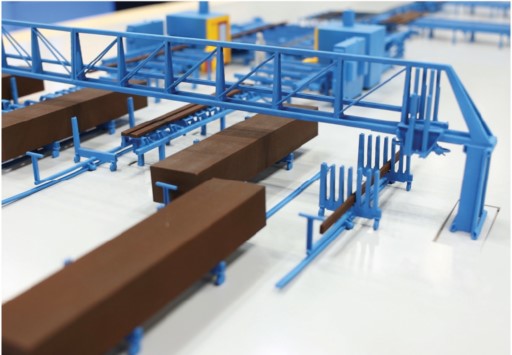It’s Not One Size Fits All
“Implementing an automated equipment solution differs from other mechanical solutions because it is simply not a plug-and-play solution,” says Steve Broadbent of SunPro Corporation. “Further, any of today’s automated solutions requires you to make significant changes to your processes. There are a lot of good reasons to go this route but be prepared to make a significant time investment on top of the capital investment.”
Steve makes these points not to dissuade anyone from pursuing today’s automated equipment options, he went through the process and is very pleased with the result, rather he wants his fellow component manufacturers (CMs) to pursue it with their eyes wide open. Another CM who has taken this journey is Jason Blenker of Aedifix Builds, “while none of the solutions out there will be a perfect fit for your operation or all the different trusses you produce, they still offer considerable advantages to CMs who are looking to increase production capacity and reduce their reliance on human labor.”
Both Steve and Jason agree that the key to successfully employing today’s automated solutions is knowing your end goal. “You need to know what constraint you want to overcome,” says Steve. “Is it material handling, is it cutting, is it truss assembly, or is it a combination? The answer to that question will help narrow down the options.” With an investment of this magnitude, you want to avoid simply pushing the bottleneck to another area of operation.
 Once you know the constraints you want to overcome, Steve says it’s important to create a thorough list of questions to ask each of the automation solution providers. “Your questions should not only get at how their equipment can help you reach your goals, but also the level to which they are willing to customize their current equipment to your unique needs and how much they are willing to hold your hand through the entire process.”
Once you know the constraints you want to overcome, Steve says it’s important to create a thorough list of questions to ask each of the automation solution providers. “Your questions should not only get at how their equipment can help you reach your goals, but also the level to which they are willing to customize their current equipment to your unique needs and how much they are willing to hold your hand through the entire process.”
Another issue both Steve and Jason raise is that given the relatively new entry of many of the automation solution providers, there’s not a great depth of knowledge regarding the industry. “There needs to be a commitment to learn together from design to installation to problem solving,” says Jason. “It’s definitely not something you just install and walk away from.”
For example, Steve worked with Hundegger to develop a custom lumber conveyor system to feed lumber through their Hundegger saws and to multiple production tables. “We had a lot of unique space constraints in our production facility that we had to accommodate that made it necessary to develop a custom solution,” says Steve. “They’ve been great to work with and I feel like we we’re just reaching the point where we are seeing the overall vision and manufacturing potential begin to materialize."
Jason has experience working with House of Design (HOD) and another up and coming robotics company called Brave Control Solutions. “Implementing a company-wide solution like what HOD offers is certainly another way to go,” says Jason. “Pursuing cutting edge solutions offers the biggest challenges, but also the biggest gains when it comes to reducing your labor burden.”
Software integration is also an area that requires significant assistance from your suppliers. “The equipment designers and software developers need to work together,” says Steve. “Many times the equipment would do something unexpected and it took smart people from multiple companies to figure out what was going on and come up with a solution to fix it.”
Beyond installing the equipment and working through software integration, CMs also need to retrain their employees to get the most out of the new system. “Traditional mechanical systems in our industry made it easier to work around problems instead of addressing them,” says Steve. “Automated systems force you to have to work through issues head on as soon as you identify them. Software programs and machines are not as adaptable as people.”
This can be a good thing though as it forces everyone in the production process to re-evaluate their approach to accomplishing tasks and seek efficient and straight-forward solutions. “You have to involve your people in every step of the process. It’s not only an effective way to build buy-in, but their experience helps you arrive at the best solution to each implementation challenge as it comes up,” says Jason.
Jason and Steve encourage anyone interested in learning more to go through the process of identifying their constraints and goals, formulating their list of questions, and then attend BCMC | FS 2024 in Milwaukee, Wisconsin, where all the automation providers will be in one place to answer questions.
Assessing Your Need for Automation
Speakers: Jason Blenker, Aedifix Builds and Steve Broadbent, SunPro Corporation
Moderator: Sean Shields, SBCA
